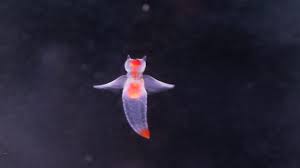Sea Butterflies : Impact Of Climate Change

The population of the sea butterflies in the Southern Ocean is shrinking due to climate change, making them extremely vulnerable
- Sea butterflies, scientific name Thecosomata, are a suborder of sea snails known as shelled pteropods.
- They have muscular feet that allow them to swim in water instead of gliding on solid surfaces.
- Sea butterflies are holoplanktonic (organisms that pass their whole life floating, drifting, or swimming weakly in the water) and spend their entire life cycle in the water column.
- They are found in all oceans but are more diverse and abundant in colder waters.
- Sea butterflies have bilateral symmetry and a coiled or uncoiled shell of various shapes and sizes.
- Their shell is mostly transparent and very fragile and can be easily dissolved by ocean acidification.
- They have a pair of wing-like lobes or parapodia for propulsion and a head with eyes, tentacles, and a mouth with a long proboscis to capture prey.
- They have a reduced or absent gill and rely on their body surface for gas exchange.
- They are a major food source for many fish, seabirds, whales, and other marine animals.
- They also play a key role in transporting carbon from the surface to the deep ocean through their shells and fecal pellets.




